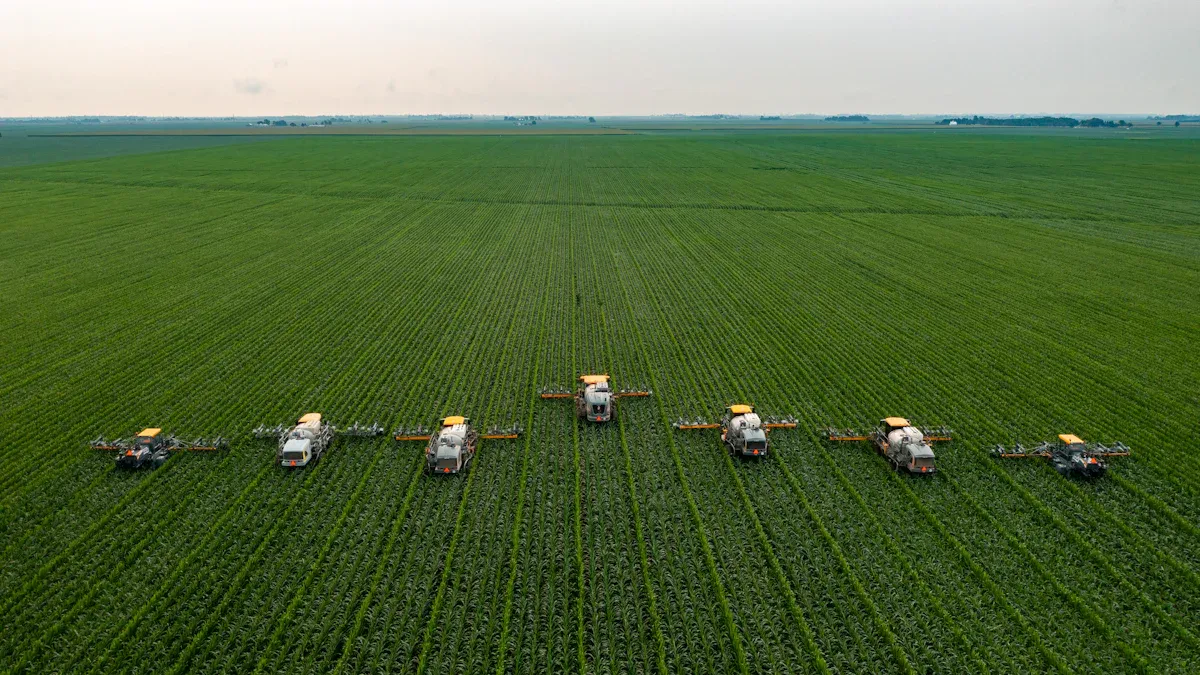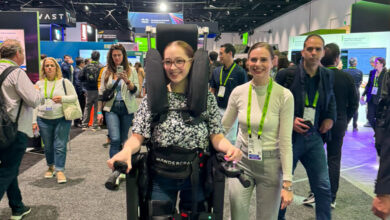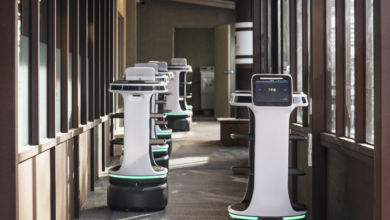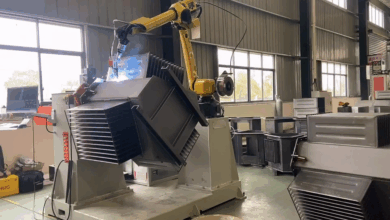Uses Of Robots In Different Industries
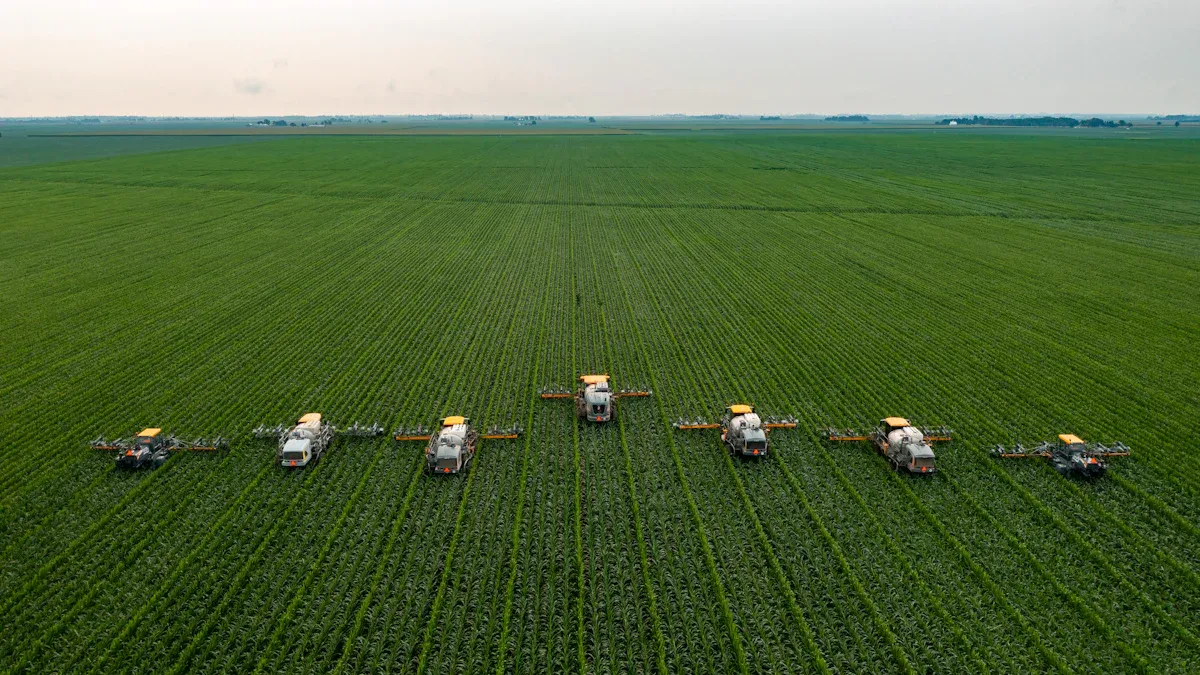
I see robots in many places today, highlighting the significant robotics impact across industries. The global robotics market was $71.2 billion in 2023, with Asia-Pacific leading in robot adoption. South Korea has the highest robot density worldwide.
Robots help work get done faster and better, making fewer mistakes than people and enhancing worker safety. Their use spans healthcare, manufacturing, and even homes. Many jobs now incorporate robotic technology and artificial intelligence, demonstrating the broad robotics impact across industries and how this technology is transforming our lives. I follow leaders like EVST for the latest robotics news.
Robotics Impact Across Industries
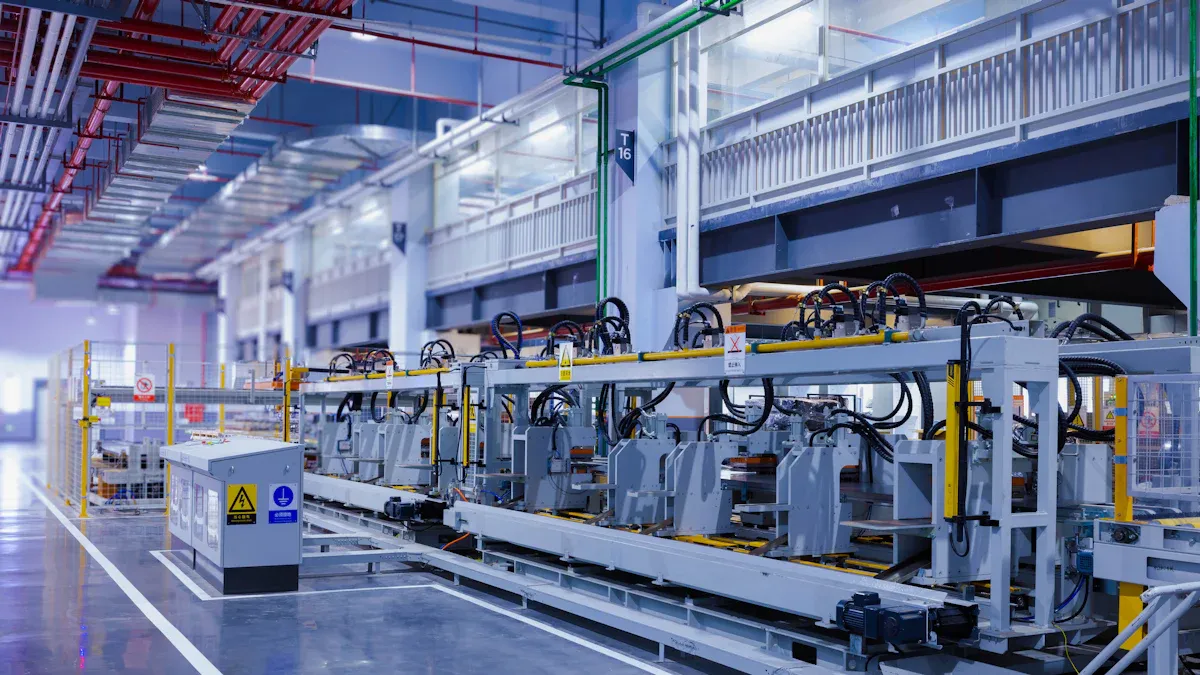

Healthcare
Robots are used more in healthcare every year. Hospitals use robots to deliver supplies and help with surgeries. The da Vinci Surgical System is a well-known example. Surgeons control its robotic arms from a console. This gives them better control and accuracy. The robot’s camera shows doctors clear images inside the body. Patients often have smaller cuts and less pain. They also recover faster. Some people go home the day after prostate surgery with the da Vinci robot. Before, they might stay in the hospital for a week.
Robots like Moxi bring medicine and supplies to nurses. This saves nurses from walking long distances. Nurses then have more time to care for patients. It also helps them feel less tired. Social robots like Pepper help elderly patients feel less lonely. These robots do not replace doctors or nurses. They make their jobs easier and safer.
Hospitals everywhere use robots for moving supplies and helping patients. Some robots even guide visitors. Robots help hospitals work better and keep patients safe. They also help patients get better results.
Agriculture
Robots are changing how farmers grow food. Tractors, drones, and machines with sensors help plant, water, and harvest crops. These robots can work all day and night. Drones spray fertilizer and pesticides only where needed. This saves money and reduces waste. Tractors that drive themselves help farmers do more work and use less fuel.
Robots help farms grow more food and use less labor. They also help with weeding, planting, and caring for animals. More farms are using robots now. This shows that farming is becoming more automated.
Farmers use data from robots to decide when to water or harvest. This helps them use fewer resources and feed more people. Robots make farming safer, faster, and better.
Food Industry
Robots are used a lot in the food industry. They work in fast-food kitchens and big food factories. Flippy is a robot that fries food. It can cook over 100 baskets each hour. This is almost twice as fast as a person. Flippy uses sensors and AI to keep food at the right temperature. This makes food safer and more even.
Robots also help pack food and check for mistakes. They use cameras to find broken packages or wrong labels. This helps stop waste and keeps food safe.
During the COVID-19 pandemic, robots helped kitchens stay open. They also helped people keep a safe distance. Flippy helps stop burn injuries and lets younger workers use fryers safely. Robots in the food industry make food safer, faster, and better.
Manufacturing
Manufacturing uses more robots than any other industry. Robots weld, put together, and pack products in factories. In 2023, over 541,000 industrial robots were installed worldwide. Asia uses the most robots, and China has over 1.7 million robots.
Robots do dangerous and boring jobs. This helps stop injuries at work. For every million dollars spent on robots, injury rates drop. Companies save a lot of money this way. Robots also work faster and make fewer mistakes than people.
Some workers feel more stress because they must learn new skills. They need to fix and program robots. Still, robots make factories safer and more productive.
Factory Floors
On factory floors, robots do many hard jobs. Some robots move materials around by themselves. Cobots work next to people and help with tasks. Robotic arms weld or paint parts. Cobots have safety features to stop injuries.
Robots help factories work faster and make better products. AI robots use cameras to find problems and fix them right away. Factories use robot data to know when to fix machines.
Robots mean people do less boring or risky work. This makes factories safer and more efficient. Robots are changing how factories work.
Mining
Mining is very dangerous, but robots help keep people safe. Some robots drive trucks and loaders underground. This keeps workers away from danger. Drones check tunnels and air quality. This means fewer people go into risky places.
Robotic arms fix machines that are hot or toxic. AI robots plan the best routes and save fuel. Robots also help clean up land and watch the environment.
New technology lets people control robots from far away. This keeps workers safe. Robots make mining safer and help get resources better.
Education
Robots are now common in schools. Robots like NAO and Pepper help students learn. Dash and Cue robots make coding fun for kids.
Studies show robots help students pay attention and work together. Robots do boring jobs for teachers. This gives teachers more time to help students. Robots make learning hands-on and easier to understand.
Robots also help students with special needs. They give one-on-one support. Robots make learning more fun and interactive.
Military
Robots are used more in the military now. They do dangerous jobs like bomb disposal and surveillance. UAVs collect information and do precise strikes. This keeps pilots safe.
UGVs handle dangerous materials and explore unsafe places. Robotic exoskeletons help soldiers carry heavy things. This helps them last longer and stay safe. Robots work all day and night. This helps missions succeed and keeps people safe.
Some people worry about robots making big decisions. Military leaders say humans must always be in charge. Robots make military work safer and more effective.
Space
Space missions need robots. NASA’s Mars rovers found signs of water on Mars. Robots like Dextre fix the International Space Station. This keeps astronauts safe.
Robots work in places where people cannot go. They collect data, study soil, and build things. Future robots will help build homes on the Moon and clean up space junk.
Robots in space work all the time. This saves money and helps us learn more about space. Robots help us discover new things beyond Earth.
Household
Robots help make life easier at home. Roomba vacuums clean floors while you do other things. There are also robot mops, window cleaners, and lawn mowers. These save time and effort.
The household robot market is growing fast. It was worth almost $12 billion in 2024. It may reach over $65 billion by 2033. These robots use AI and smart mapping to work better. They fit into smart home systems.
Robots help elderly and disabled people live on their own. Pet care robots feed and play with pets. Security robots watch over homes. Many robots connect to Wi-Fi and voice assistants. This makes them easy to use.
Robots at home make life safer and more convenient. They show how robotics and AI improve our lives.
Impact of Robotics and Artificial Intelligence
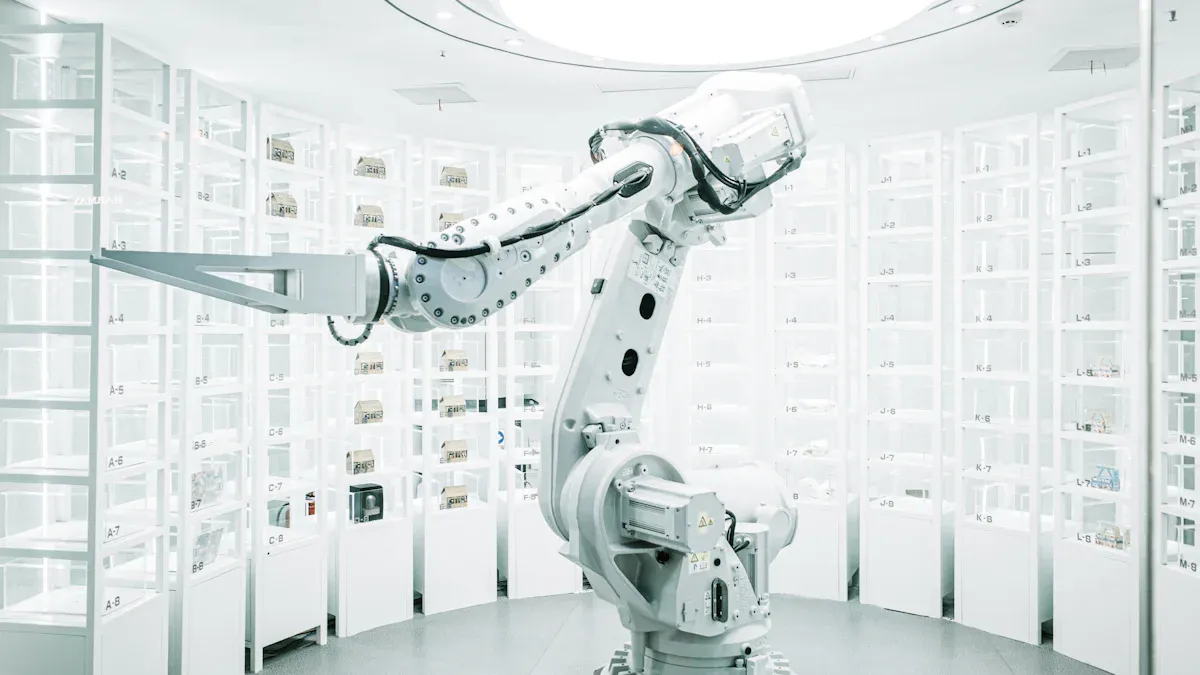

Productivity and Safety
Robotics and artificial intelligence help many industries every day. I see robots in factories, hospitals, and construction sites. Robots and AI make work safer and faster. Autonomous mobile robots carry heavy things and avoid accidents with smart sensors. Occupational exoskeletons help workers lift heavy loads. This has lowered injuries by 83% at Toyota and Boeing. Smart PPE like smart boots warn workers about dangers. Cobots work next to people and stop if someone is too close. AI-driven quality control systems find mistakes early. This keeps products safe.
Customization and Automation
Robotics and artificial intelligence have changed how we make things. AI-powered robots learn from their surroundings and can do new jobs. In factories, these robots do hard assembly and check quality very well. Cobots use sensors and AI to work safely with people. AI in robotics helps fix machines before they break. It also helps plan supply chains. In electronics and car plants, AI robots change their work quickly and check parts better than people. For consumer products, AI robots make custom items, like clothes that fit each person. Smart sewing robots and cutting systems use AI to make sure every item is correct. These uses of AI and robotics make factories faster, more flexible, and more personal.
Future Trends
The future of robotics and artificial intelligence looks bright. Experts think AI-powered robots will get smarter and more helpful. Cloud-based AI, edge computing, and service robots with language skills are growing fast. Humanoid robots, cobots, and soft robotics will work closer with people. AI-powered robots will use machine learning to get better on their own. In healthcare, elder-care robots will help older people. The market for AI in robotics may grow from $25 billion in 2025 to over $126 billion by 2030. Companies like EVST make advanced welding and assembly robots that use AI for better quality and safety. I think the future will bring smarter, more adaptable, and friendlier robots to all parts of life.
Notice robotics and artificial intelligence are changing all kinds of jobs. They help people work safer and faster. They also help people come up with new ideas.
